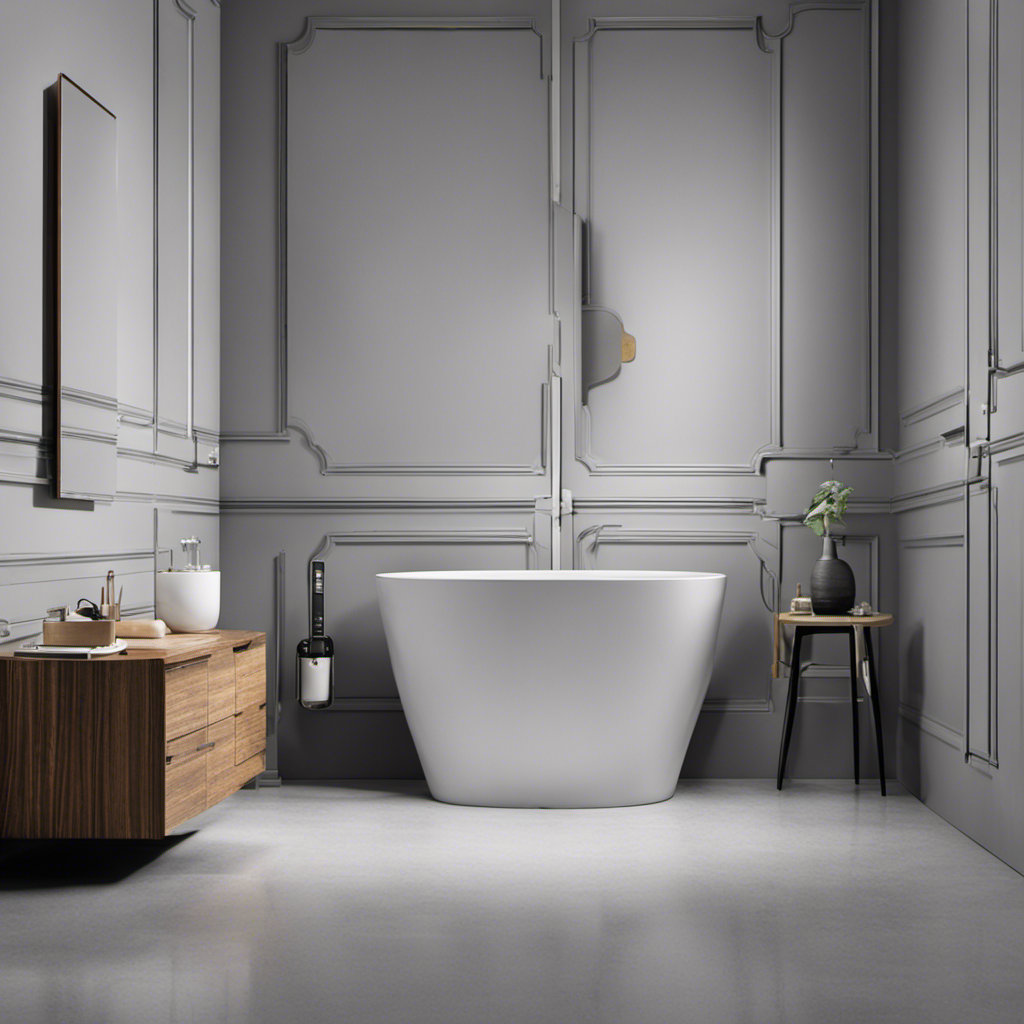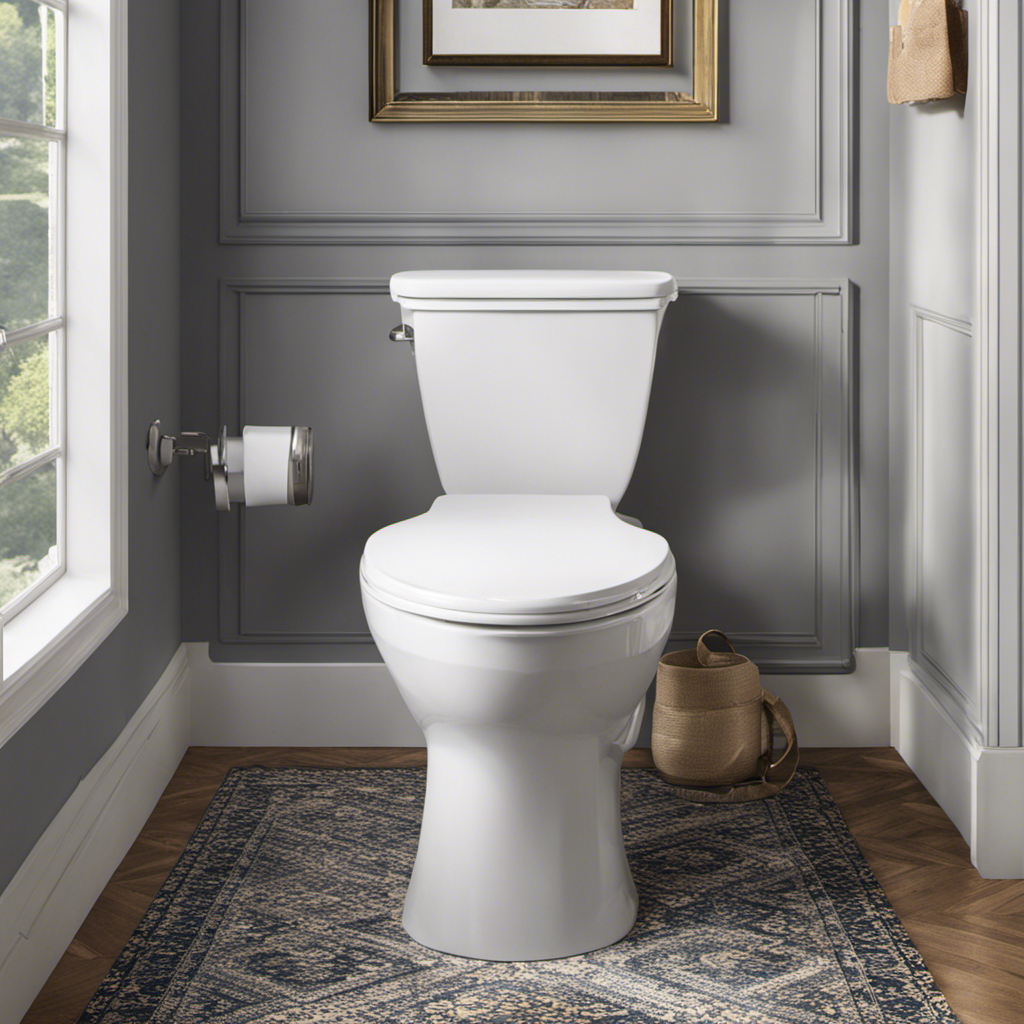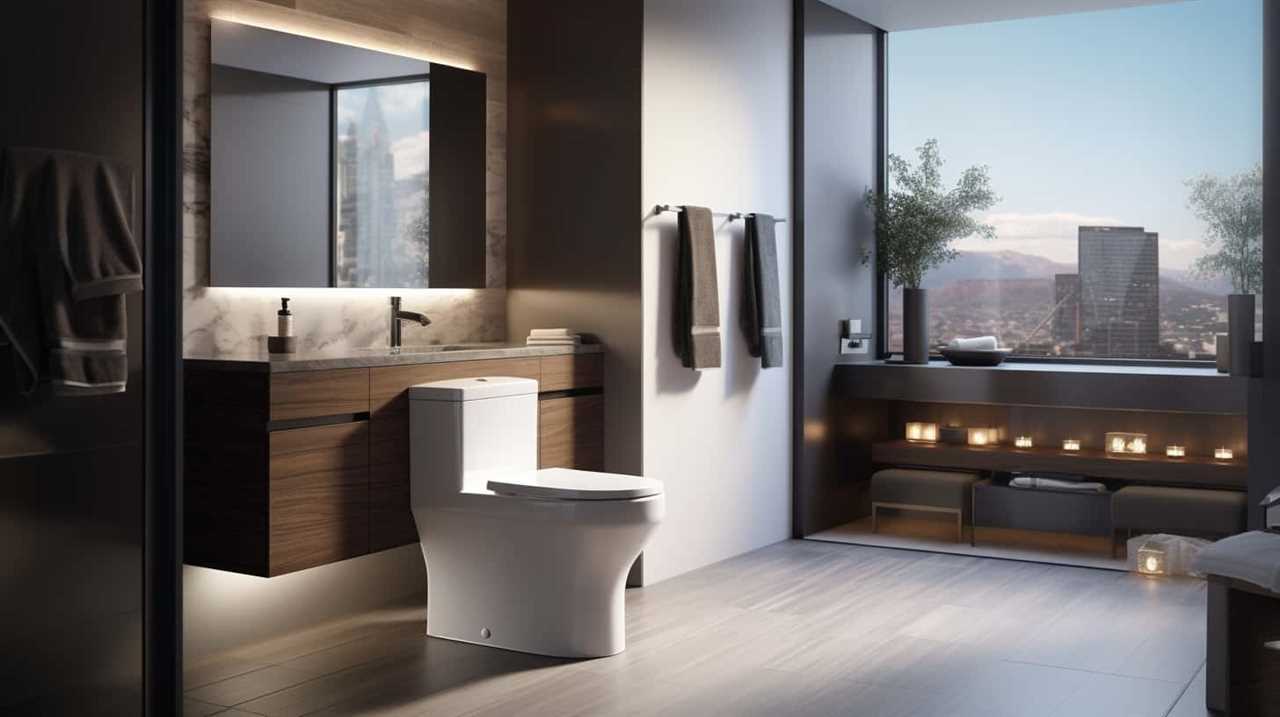So, you’re in the market for a new toilet, huh? Well, before you go plunging into the world of porcelain thrones, there’s one crucial step you can’t afford to skip: measuring.
That’s right, my friend, if you want your new commode to fit like a glove, you’ve got to get those measurements just right. Lucky for you, I’m here to break it down for you step by step.
So grab your measuring tape and let’s get started on this throne-sizing adventure.
Key Takeaways
- The rough-in measurement is crucial for proper toilet installation, referring to the distance between the wall and the center of the toilet’s drainpipe.
- Measuring the distance from the wall to the center of the drainpipe accurately determines the proper placement of the new toilet and ensures sufficient drainpipe clearance.
- Consider the toilet bowl height options, including standard (15 inches), comfort height, and ADA compliant (17-19 inches), based on your needs and preferences for comfort.
- Calculate the space required for the toilet tank, considering the dimensions of your bathroom, the distance from the wall to the center of the toilet flange, and the height and width of the tank. Also, consider water consumption for environmental friendliness.
Understanding the Rough-in Measurement
Understanding the rough-in measurement is crucial when measuring for a new toilet. It is a key factor in ensuring proper toilet installation and choosing the right toilet size.
The rough-in measurement refers to the distance between the wall and the center of the toilet’s drainpipe. This measurement is important because it determines the position of the toilet and ensures that it fits properly in your bathroom.
To accurately measure the rough-in, start by locating the center of the drainpipe on the wall behind the existing toilet. Then, measure from this point to the finished wall.
Most residential toilets have a standard rough-in measurement of 12 inches, but it’s essential to measure it precisely to avoid any installation issues.
Measuring the Distance From the Wall to the Center of the Drainpipe
To get an accurate measurement, you’ll need to know the distance from the wall to the center of the drainpipe. This measurement is crucial for determining the proper placement of the new toilet.
Begin by measuring the distance from the finished wall to the center of the drainpipe. Ensure that you measure from the center of the pipe as this will provide the most accurate result. This distance is commonly referred to as the ‘wall to drainpipe distance’ and it plays a crucial role in ensuring that the toilet will fit properly and have sufficient drainpipe clearance.
Once you have this measurement, you can move on to determining the toilet bowl height, which is the next step in the process.
Determining the Toilet Bowl Height
Make sure you check the height of the toilet bowl to ensure it is comfortable for you to sit on. Finding the right toilet height is crucial for your comfort and ease of use. To assist you in this process, here is a table outlining the common toilet bowl dimensions:
| Toilet Bowl Height | Description |
|---|---|
| Standard | Approximately 15 inches |
| Comfort Height | Approximately 17-19 inches |
| ADA Compliant | Approximately 17-19 inches |
Standard toilet bowls are suitable for most people, while comfort height and ADA compliant toilets are designed for individuals with mobility issues or those who prefer a higher seat. Consider your needs and preferences when choosing the toilet bowl height. Additionally, it’s essential to measure your existing toilet bowl height accurately before making a purchase.
Calculating the Space for the Toilet Tank
When calculating the space for the toilet tank, it’s crucial to consider the dimensions of your bathroom. This will ensure that the toilet fits properly and doesn’t feel overcrowded.
To calculate the space needed for the toilet tank, measure the distance from the wall to the center of the toilet flange, which is where the toilet will be installed. This will give you the rough depth required for the tank. Additionally, consider the height and width of the tank to ensure it fits within the available space.
When choosing the right toilet seat, factors to consider include comfort, durability, and ease of cleaning.
It’s also important to calculate the water consumption of the toilet to ensure it meets your needs and is environmentally friendly.
Measuring the Clearance for Comfort and Accessibility
Calculating the space for the toilet tank is essential, but it’s also important to measure the clearance for comfort and accessibility in your bathroom. When measuring for clearance requirements and ADA compliance, consider the following:
-
Side Clearance: Ensure that there is enough space on either side of the toilet for easy maneuverability. The minimum requirement is 18 inches, but 24 inches is recommended for greater comfort and accessibility.
-
Front Clearance: Measure the distance from the front of the toilet to the nearest obstruction, such as a wall or vanity. The recommended minimum is 21 inches, but 30 inches is preferable for individuals with disabilities.
-
Height Clearance: Measure the distance from the floor to any overhead obstructions, such as shelves or light fixtures. The required minimum clearance is 80 inches.
Frequently Asked Questions
What Tools Do I Need to Measure for a New Toilet?
To measure for a new toilet, I need a tape measure and a level. It’s important to avoid common mistakes in toilet measuring to ensure a proper fit during installation.
How Do I Determine the Type of Toilet I Need for My Bathroom?
To determine the type of toilet needed for my bathroom, I compare toilet types and avoid common installation mistakes. It’s important to be precise and technical when making this decision.
Can I Install a New Toilet in the Same Spot as My Old One?
Yes, you can install a new toilet in the same spot as the old one, but it may require relocating the plumbing. It’s important to measure and ensure proper clearance for the new toilet.
How Do I Measure for a New Toilet if I Have Limited Space in My Bathroom?
To measure for a new toilet in a small bathroom with limited space, I need to consider space-saving toilet options. It’s important to accurately measure the distance between the wall and the center of the existing toilet’s drain.
Are There Any Specific Building Codes or Regulations I Need to Consider When Measuring for a New Toilet?
When measuring for a new toilet, it’s important to consider building codes and regulations. These codes ensure proper installation and safety. Follow precise measuring techniques to ensure the toilet fits correctly and meets all requirements.
Conclusion
In conclusion, measuring for a new toilet is a crucial step in ensuring a proper fit and functionality. By understanding the rough-in measurement, distance from the wall to the center of the drainpipe, toilet bowl height, space for the toilet tank, and clearance for comfort and accessibility, you can make an informed decision.
So, why settle for a toilet that doesn’t meet your needs when you can measure and choose the perfect one? It’s time to upgrade and enjoy the convenience and comfort you deserve.










